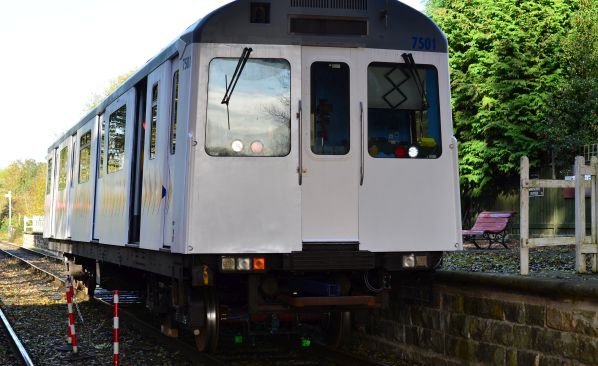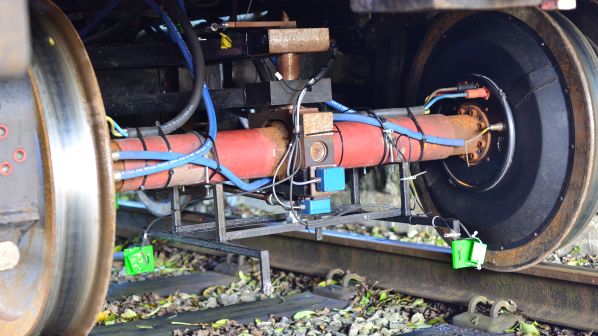Acti-Wheel uses artificial intelligence to guide the train along the track. The new system works by powering each wheel independently. Lasers measure the wheel distance from the centre of the track and send the data to a computer, which then calculates the speed each wheel needs to go in order for the train to remain centred. The new system does not require a great deal of force as only very small wheel corrections are needed.
Acti-Wheel integrates a permanent magnet synchronous traction motor weighing 40kg into the well of a monobloc wheel. This obviates the need for a transmission system between the wheel and the motor. There are also no moving parts apart from the bearing. The weight of a bogie is reduced by 2 tonnes.
Acti-Wheel does not require friction braking as the train can be braked using electric braking, with energy regeneration down to 0km/h.

The system has been tested on a modified former London Underground District Line vehicle belonging to Vivarail.
“The control strategies are the critical element,” Mr Neil Cooney from SET told IRJ. “We have a good deal of confidence of how to drive down the track to manage the wheel-rail contact patch. We are trying to avoid any unnecessary energy in the wheel-rail contact patch to eliminate rolling contact fatigue. The real benefit is on curved track, especially with curves of less than 1000m radius, where we can achieve low rail wear and energy consumption.
Motored wheels
“Every wheel is motored, and every wheel will be steered and braked which results in better braking. The traction system will deliver sufficient power to accelerate a 40-tonne train up to 140km/h.”
“With fewer mechanical parts, trains could be completely redesigned,” says Dr Chris Ward, from Loughborough University’s School of Mechanical, Electrical and Manufacturing Engineering. “Acti-Wheel means you would no longer need the complicated suspension arrangement of bogies. This could free up designers to use the space in a much more efficient manner with lower floors, or double decks. It is also a steppingstone on the route to operational automation where vehicles could guide themselves through switches and allow peer-to-peer communications so the restrictive signalling system could be removed. But that is way further down the line.”
“The Acti-Wheel project will dramatically change the way rail vehicles run on the railways,” says Mr Martin Whitley, director of SET. “It can produce more torque - more driving force on one side or the other - in order to steer the wheelset down the centre of the track.”
The project has been sponsored by Britain’s Rail Safety and Standards Board (RSSB). Cooney says the next step is to obtain funding to take the project forward.

